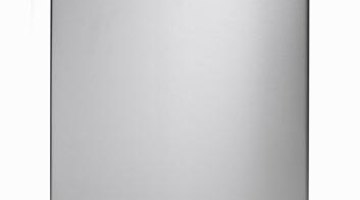How to Remove Dents From Stainless Appliances Using Compressed Air
Compressed air comes in metal cans with the air tightly compacted inside. A small tube on the outside of the can lets you aim the air at a specific location. While manufacturers design the cans for cleaning computer keyboards and other electronics, the compressed air is also suitable for home repairs. A small can contains more than enough air for repairing minor dents in stainless steel appliances, including refrigerators, stoves and even toasters.

Step 1
Dunk the cloth in cool or cold water and squeeze, removing most of the liquid. Rub the cloth over the dented area of the appliance, which wipes off any dust or debris and begins lowering the surface temperature of the stainless steel.
Step 2
Shake the can of compressed air gently between your hands, and insert the included tube if you have dents in a smaller appliance. For larger appliances, place the tube to the side. The tube lets you aim the air at a smaller location, but for larger pieces or larger dents you want more surface sprayed.
Step 3
Turn the can upside down, and position the air hole a few inches from the dent. Press on the nozzle, which releases the air and aims the air directly at the dent. Spray the dent for a few seconds or until you freeze the area. You should notice a light film covering the dent, which is moisture.
Step 4
Set the hair dryer on its highest setting, and immediately turn it on. Aim the hair dryer at the dent, keeping the air a few inches from the steel. The hair dryer warms the stainless steel up quickly, which forces the contract and expand process.
Step 5
Repeat the process if the dent remains. As you aim the hair dryer at the dent, gently press down on the steel around the dent. The pressure of your hands, combined with the heat, should help force out the dent.
References
Tips
- If the compressed air does not work on your dent, consult a professional technician. Depending on the size of the dent, you may need his help.
Warnings
- Do not waste time in between the cold air and the heat from the hair dryer. If you take too much time, the steel begins warming up and the process will not work.
Writer Bio
Jennifer Eblin has been a full-time freelance writer since 2006. Her work has appeared on several websites, including Tool Box Tales and Zonder. Eblin received a master's degree in historic preservation from the Savannah College of Art and Design.
Photo Credits
- Ryan McVay/Photodisc/Getty Images
More Articles



